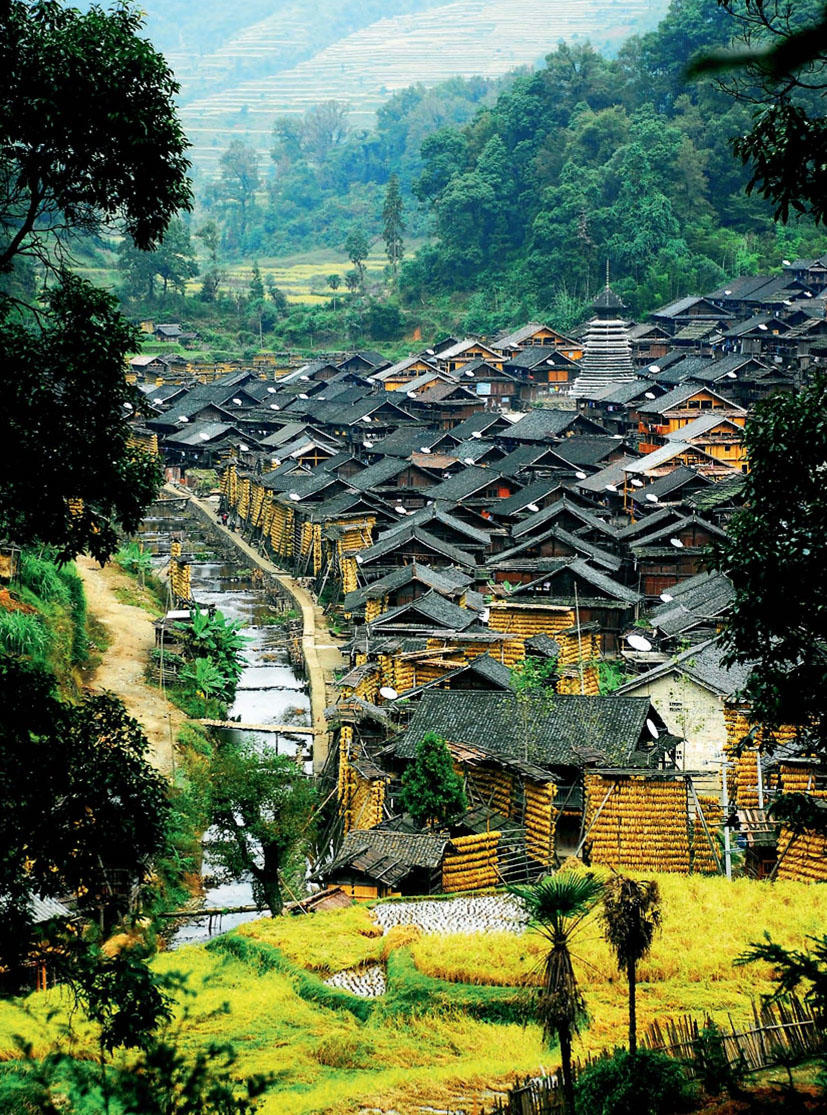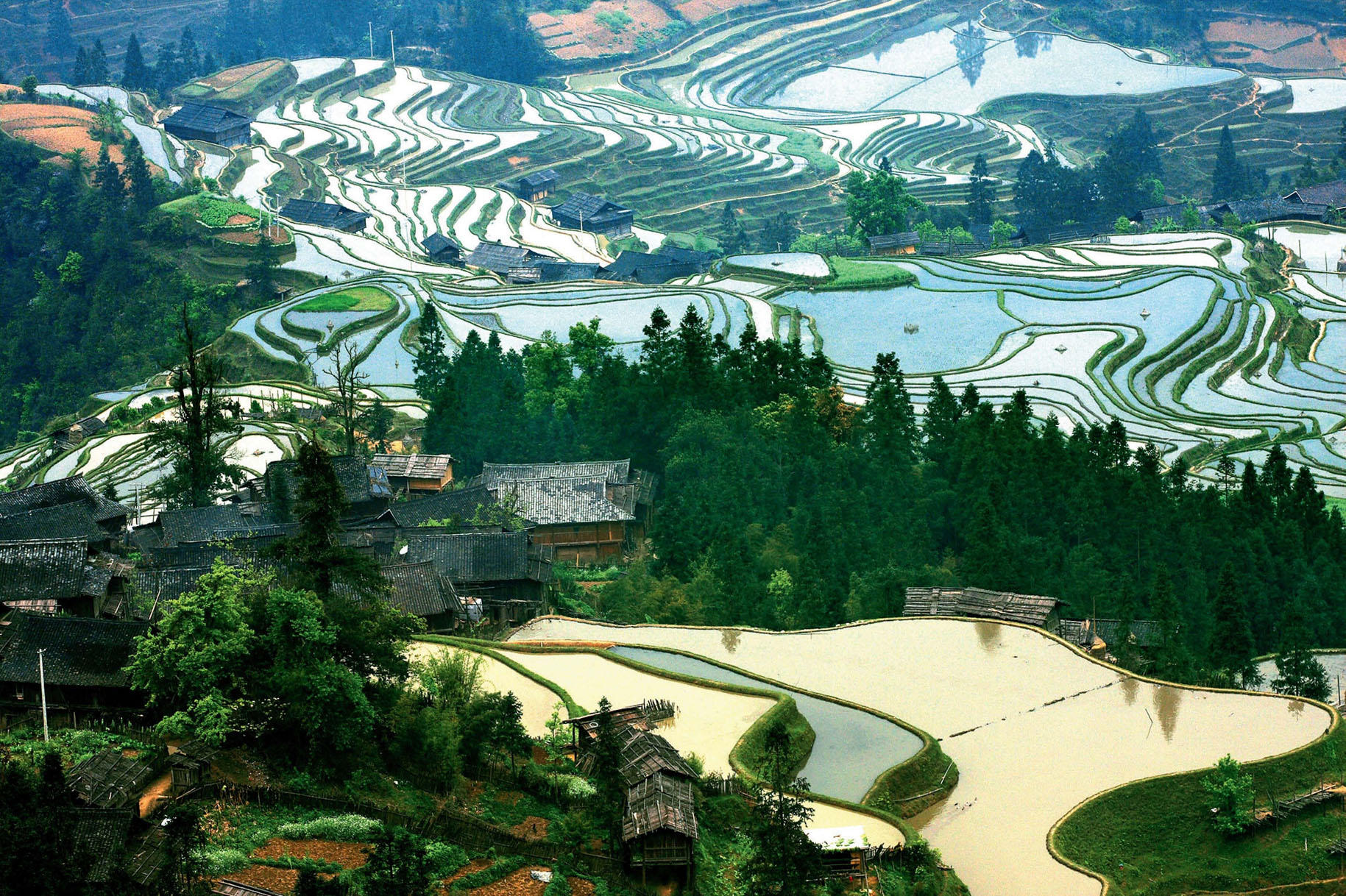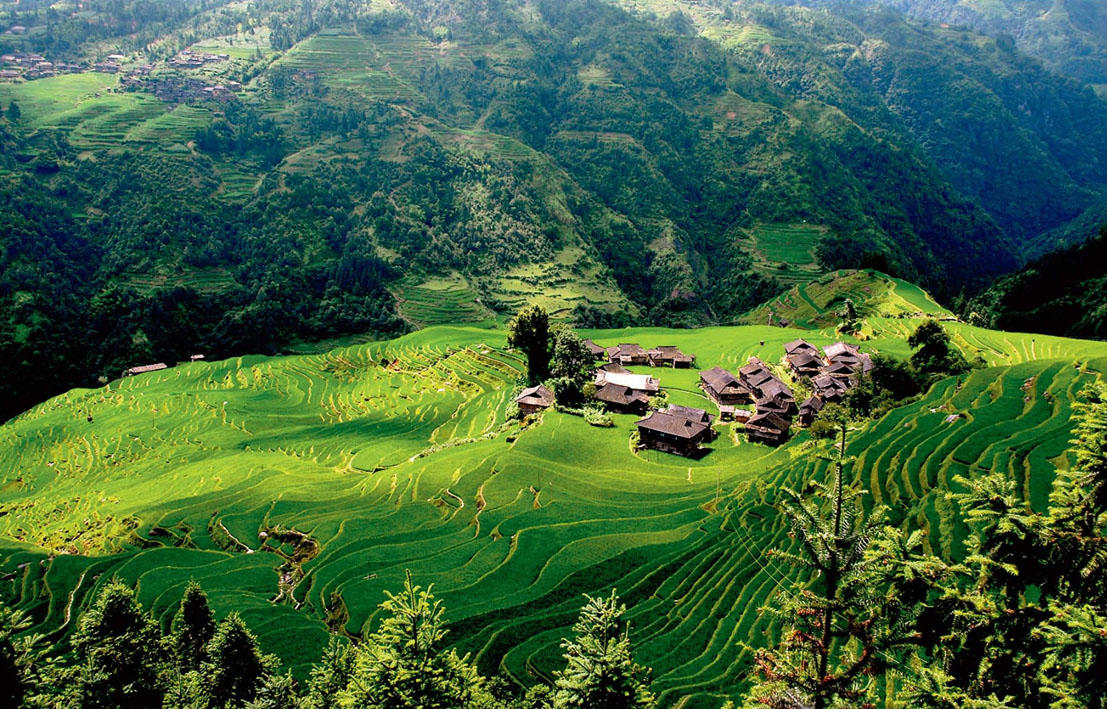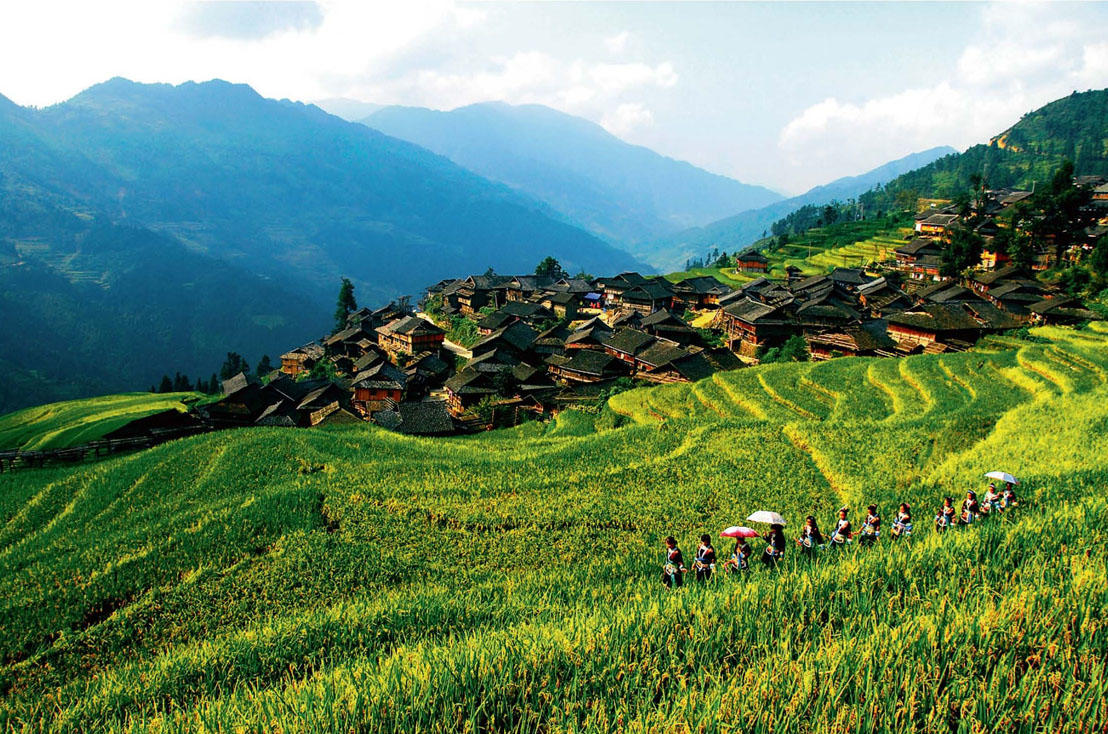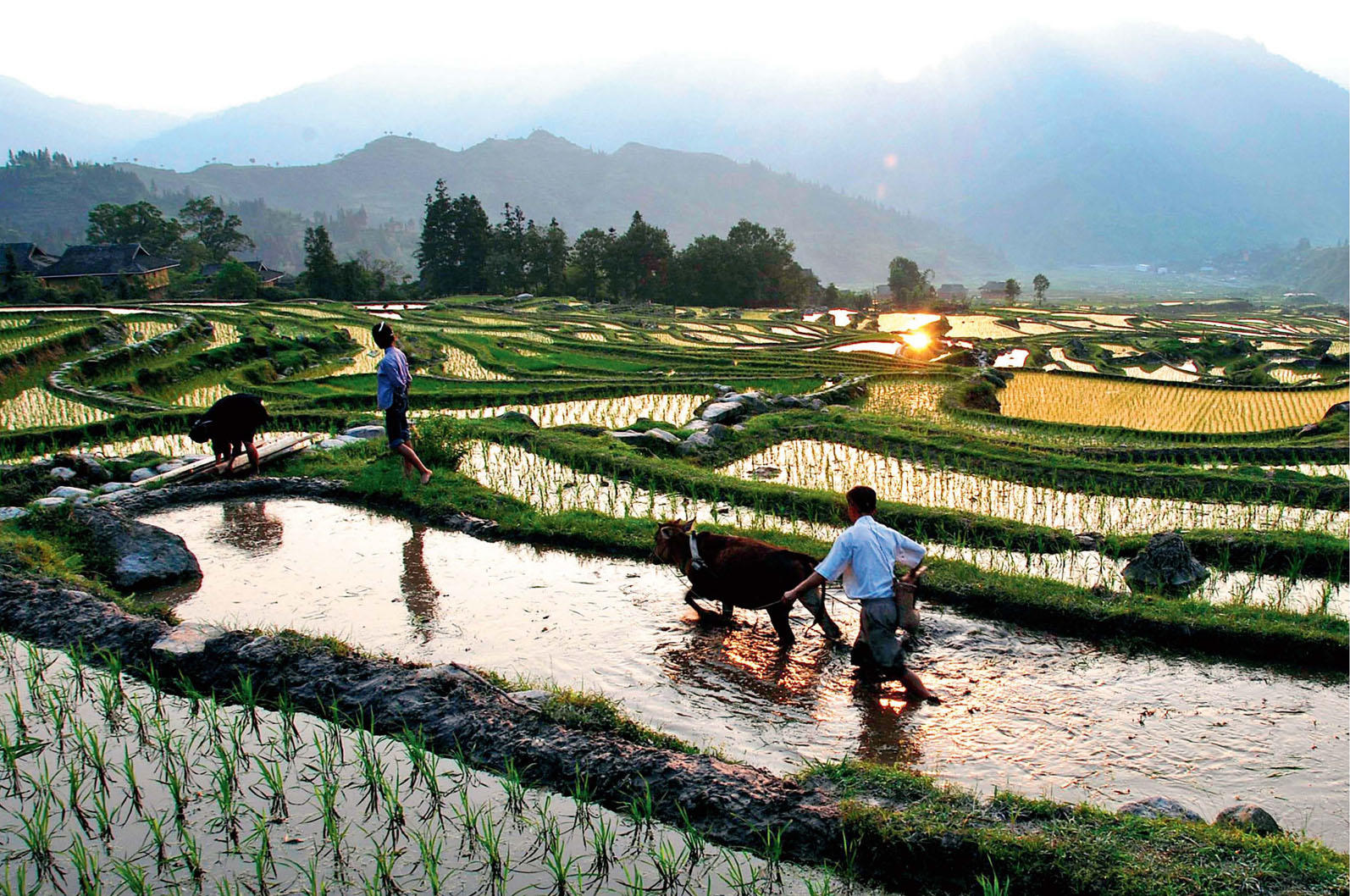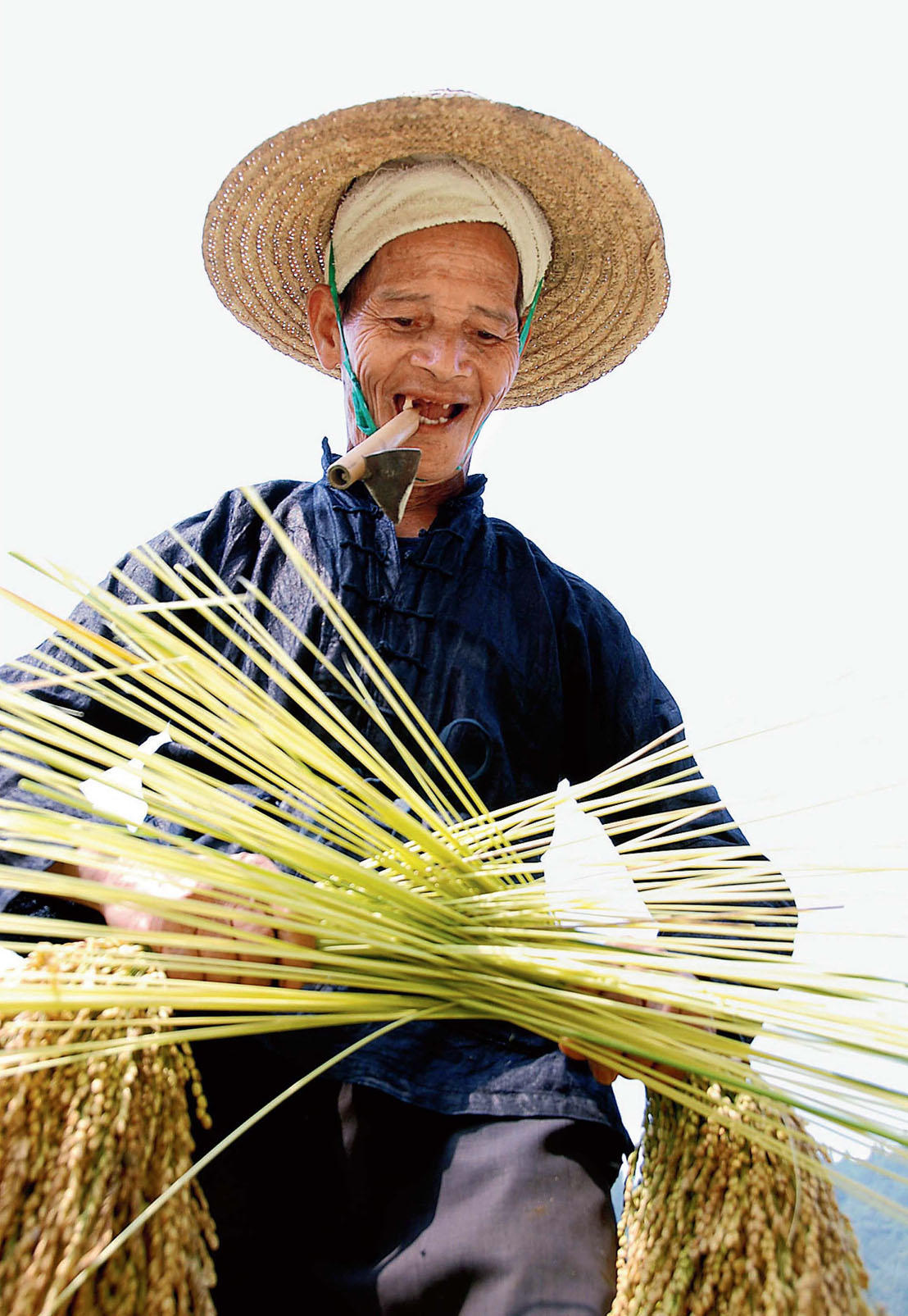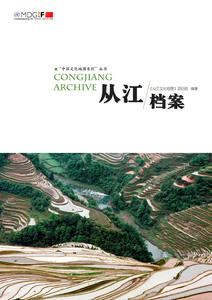目录
-
引言 [收起]
-
Introduction [收起]
-
项目实施 [收起]
-
项目成果 [收起]
Brief Introduction of Congjiang Cultural Mapping MDG-F China Culture and Development Partnership Framework
1.Congjiang Cultural Mapping covers
■Five ethnic groups in Congjiang
■11 Pilot villages(11 administrative villages=42 natural villages)including:
●Dong villages:Gaozeng,Xiaohuang,Zaimen and Zengchong;
●Miao villages:Biasha,Baijiu and Dangweng;
●Zhuang villages:Xiayao and Gandong;
●Yao village:Gaojiao;
●Shui village:Gaoliang.
■3378 families
■14662 people
(注: 秋。
Autumn.
梁全康 摄
Photo by Liang Quankang)
2.Main Results Achieved
2.1 Local champions identified and trained.
2.1.1 A few “seeds” identified and trained. The “seeds” refer to local focal point,cultural mapping recorders and local volunteers(20 in total). They are all local ethnic minority people with passion for their culture. With the project interventions,they have gained clearer visions of their culture,why there is a need to protect their cultural resources and the value of cultural diversity. In addition,they have also assumed the responsibility to lead their fellow villagers in their own efforts to protect their cultural resources.
(注: 风景如画。
Scenery.
张成武 摄
Photo by Zhang Chengwu)
2.1.2 “Seeds” with clear visions,enhanced capacities and strong commitment. With the project support,they have become leaders and organizers of local cultural resources protection. They are new blood in addition to administration and traditional organizations. They can work with village leaders to convey villagers’ voices to administration and help with village elders to organize traditional activities. They effectively facilitate communication between village and the outside and among different hierarchies inside their communities.
2.1.3 Project interventions——training,hands-on implementation,team building. Repeated and various trainings were provided to the “seeds”. Emphasis was given to hands-on implementation. With enhanced capacities,“seeds” have been recognized by their communities and local administration. Among the project team members,because of their common vision and similar experience,they have formed a natural team even beyond the project framework.
2.2 Through participation,villagers recognized the value of their culture.
2.2.1 History,cultural traditions and practices——the elders’ memory gained respect. During the process of documenting their own culture,many village elders served as main narrators of history and cultural traditions. Both the village elders and community members recognized the value of their memories. Such memories also stimulated cultural interactions among all community members.
2.2.2 Identified important cultural characteristics——self-awareness strengthened. Important information has been identified on community cultural maps. What are they?Where are they?What do they look like?Famous Chinese scholar Mr.Fei Xiaotong once said:cultural self-awareness means people with certain cultural context come to know the origin,evolution,characteristics and directions of their culture. The participation of villagers in cultural mapping aimed to fulfill such a process for them to gain self-awareness of their culture.
2.2.3 Project interventions——making cultural archives,cultural maps and cultural calendars. Three important project tools are:cultural archives,cultural maps and cultural calendars. Cultural archives are in-depth and systematic but could easily turn out to be an exercise involving only a few narrators and recorders. Cultural maps are direct and vivid,but require much more external technical and training interventions and could not be so fully used by communities. Cultural calendars are simple and practical. They are useful for communities and could also showcase community culture to others. Calendars are used by every family and engage a lot of people for a long time. Villagers are especially proud of their cultural calendars because they mark their big days,use their own words and show their beauties.
2.3 Community cohesion strengthened through revival of traditional activities.
2.3.1 Traditional cultural activities revived based on community members’ needs and willingness,community cultural organizations were also established. Baijiu villagers decided to rebuild their buffaloring. Zengchong villagers decided to revive the tradition of “friendship banquet” which was interrupted for more than 10 years. Communities became more coherent both within and in between because of these cultural activities. Buffalo-fighting association,Dong Songs Study Centre,Dong Songs Learning-Teaching Group were set up by villagers.
2.3.2 Women self-organized their cultural activities to strength their existence and role in community life. Women received special attention during project implementation. They were invited to talk about their life in their own groups and documented their knowledge about local culture. Suddenly,women and other villagers realized women form an important aspect of village life. Women organized themselves to sing songs and found people to record their singing.
2.3.3 Encourage expression of villagers’ aspirations and support their own efforts. Villagers and women clearly expressed their ideas and choices in the process of cultural heritage identification. With project support,villagers’ expectations were fulfilled. On one hand,they are encouraged to express themselves,on the other hand,their organizational capacities were al so enhanced.
2.4 In their own autonomy,villagers decided how to lead their cultural life and explored their development path.
2.4.1 Self-recognition of their favorite activities. Thanks to their happiness and passion,such activities were organized repeatedly. Villagers willingly contributed to the revival of their traditional cultural celebrations. They were very happy and satisfied. In Baijiu village,buffalo-fighting was revived since October 2009. Until March 2011,12 buffalo-fighting sessions were organized. On average,35 nearby villages come each time with 10000~30000 participants. In Zengchong village,villagers invited 200 people from a nearby Miao village for a “friendship banquet” over 3 days. They still wanted to have more fun and invited their fellow Dong friends from Xiaohuang village for “friendship banquet” and had great fun. Zengchong’s neighboring village was influenced by them and decided to take action to revive their own celebration as well.
2.4.2 Traditional organization taking on new elements,coverage of community cultural activities expanded. In addition to the traditional way of organization,one starts to see new elements in the organizational work as well. In Baijiu village,villagers used computer printed invitations to replace traditional invitations written on wood,as it is easier to print and disseminate among many more people. In Baijiu and Xiaohuang,procedures were designed and rehearsed beforehand. Because of project influence,villagers also started to document their cultural activities.
2.4.3 Search for culture-based economic benefits. The revival of buffalo-fighting in Baijiu brought big changes to villagers. Outgoing villagers came back to raise fighting buffaloes. In 2008,95 villagers went out as migrant workers. In 2011,the number reduced to 50. In 2008,there were only 30 buffaloes in Baijiu,while in 2011,the number increased to 56. In 2008,average price of a buffalo is 12000 yuan,in 2011,the average price reaches 18000 yuan. On average,participants at the buffalo-fighting celebration spend 30 yuan per person. The buffalo-fighting also serves as a big bazaar with considerable money circulation.
2.4.4 Return of the young generation. Children and young people also enjoy participating in such activities. They gain new understanding of their villages and ethnic culture.
2.5 Original film,photo and text documentation of local culture produced.
2.5.1 First time for villagers to tell and document their own histories. There are a few dozens of village narrators for the cultural archives. This is the first time for villagers to tell and document their history,photo and film their life. Their works are also made into printed materials and audio-visual products,which are valuable treasures. Although it may not be perfect and comprehensive,these works are their own interpretation of history and culture without external influence. These works are also important reference that academia could use to understand the real local culture and life.
2.5.2 Live in their own “days”. Cultural calendars were made for each village. Photos,days and words were all selected by villagers. Although the big days may be only significant for their own communities,they are still significant days to celebrate. Cultural calendars lasted 2 years to reinforce and demonstrate the results.
2.5.3 An open system for the future. The project provided tools and planted seeds. We expect bigger results of these “seeds” even after the project time frame.
(注: 春到大地。
Spring to the earth.
杨通荣 摄
Photo by Yang Tongrong)
(注: 秋日如歌。
Autumn song.
杨通荣 摄
Photo by Yang Tongrong)
2.6 Platform created to engage volunteers and facilitate exchange of different cultures.
2.6.1 NGO characteristic,wide participation of urban volunteers. Reconciliation and innovation emerged during the exchange and encounter of different cultures. The project served as a media for different parties to understand and appreciate the beauty of cultural diversity.
(注: 耕作。
Cultivation.
张成武 摄
Photo by Zhang Chengwu)
2.6.2 Joint work and exchange across regions and cultures. Local volunteers have never met Beijing volunteers. Yet,they work together under the same project framework. Local volunteers are also invited to participate in advocacy activities. Differences,tolerance and cooperation demonstrate the values of diversified society.
2.6.3 Media coverage and awareness raising for the general public. Different cultures are interwoven. Because of its influence by economic capital,the majority’s culture becomes overwhelming. With media advocacy and direct engagement with the general public,the project tried to have more influence on the general public’s awareness raising of cultural diversity.
3.Recommendations
3.1 Collect more cases of participatory cultural projects. Field experience is the best to be used for training and demonstration.
3.2 Awareness raising is a slow and long process,while economic and social changes are very fast. If the project can be better linked to and integrated with local administrative planning and strategy,the project results will be synchronized.
3.3 Ethnic minority rural economic life is very special. Their cultural confidence is very fragile. Projects targeting “soft” aspects of development could consider to last longer and an exit strategy with follow-up interventions.
3.4 The project could design more communication channels between government and the civil society and encourage sharing and interaction between the two.
The Project team of Congjiang Cultural Mapping
(注: 喜上眉梢。
Happiness appears on the eyebrows.
杨通荣 摄
Photo by Yang Tongrong)
